11 Best first-time Europe itineraries for 1, 2, or 3 weeks
Europe is going to be very busy in the summer of 2024 as the world is back to normal and travel demand is higher than ever. One other key factor is that most European currencies are still hovering at lower levels historically compared to the US dollar, which means that Europe will feel somewhat cheap again this year. In fact, according to our World Backpacker Index, European cities like Lisbon, Madrid, and Munich are about 30% cheaper to visit than Boston, Chicago, and New York City. In other words, flying to Europe might seem expensive, but most things will be cheaper once you get there compared to the costs of visiting a large US city.
Below you’ll find 11 of the most popular and best itineraries for a first visit to Europe. Your first visit is not really the time to be different or creative, and the famous destinations tend to be popular for a reason. In other words, it’s kind of silly to visit, say, Bulgaria, if you’ve not yet been to France or Italy. I lay out the best options along with how long to stay in each place as a general guide. I also discuss Mediterranean cruises, which can actually be an amazing way to see a lot of Europe on your first visit, especially if you don’t like going back and forth to train stations and airports every 2 or 3 days.
For a bit of fun you might be interested in the cheapest 5-star hotels in Europe, which start at US$80 per night for really nice hotels. It helps show that if you choose some of the cheaper cities, you can treat yourself to some luxury that you can’t afford in most other places.
This article was last updated in March, 2024.
There are 11 starter itineraries described in detail below
- Classic London and Paris
- England and Scotland
- Paris and Italy
- Mediterranean cruise
- France, Belgium, and Netherlands
- Paris and elsewhere in France
- Italy
- Spain
- Germany
- Switzerland
- Best of cheap eastern Europe
For each itinerary there are suggestions of other destinations that are easy to add on to the main cities.
Note: This article was most recently updated in March, 2024
Building the best itinerary for your first trip to Europe
Below there are 11 popular itineraries for one week in Europe. If you’ve only got a week then choose one of them and assume you’ll return again to conquer more of this amazing part of the world. If you’ve got more time then you can choose from some of the top add-on suggestions for each one.
Start in the most famous cities
Your first visit to Europe is no time to try to be different or edgy. I recommend that you focus on these 5 great cities before you start branching out into cheaper or more obscure places.
Keep your travel days to a minimum
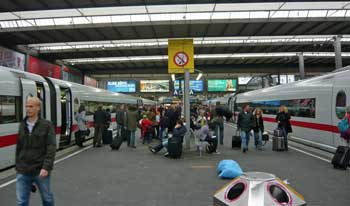
Spend 3 (or 4) nights in almost every major city
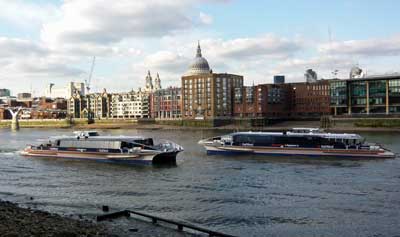
So many first-time visitors are initially planning on spending only 1 or 2 nights in major cities that I wrote a detailed explanation of why 3 nights is ideal for almost all European cities, even if you want to see as much as possible.
3 (or 4) nights will be enough for any city on your first trip
Most first-time visitors are tempted to move too quickly, but it can also be a mistake to move too slowly. It’s really amazing how much you can see in two full sightseeing days. If you spend too long in one city you’ll end up seeing things that are way down your list, while you could be in another city seeing things at the top of your list there.
Choose cities that are easy to reach from each other
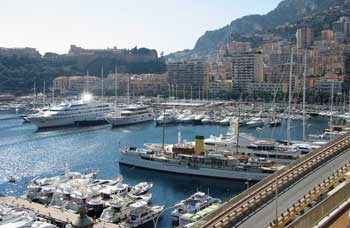
For your first trip it’s best to visit cities that are no more than a 5-hour train ride apart.
Choose cities that are connected by reasonable train rides rather than flights
To build on the point above, finding cheap flights within Europe is easy, but train travel is about a million times more enjoyable and less stressful. You’ll enjoy the train rides almost as much as the cities, so focus on places that are within 5 hours of each other by train.
Start with one of the classic itineraries below, and then add to it if you have more time
If you only have 7 days then you’ll find a list below of classic itineraries that are well-suited to a first visit to Europe. Hopefully you have more than 7 days though, and if you do you can add in one or more of the suggested add-on cities to build an itinerary that appeals most to you.
Best 1-week itineraries for the first time in Europe
Itinerary 1: Classic London and Paris
Fly into either city and take the 2-hour Eurostar train between them
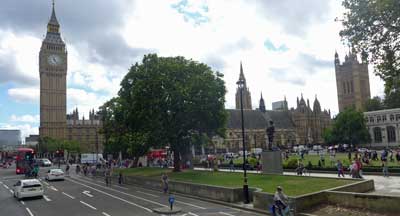
London highlights
- Big Ben and Parliament
- Westminster Abbey and St. Paul’s Cathedral
- Tower of London and Tower Bridge
- West End shows (Broadway equivalent) and classic pubs
- Buckingham Palace and Windsor Castle
Paris is actually far more beautiful than London and the food is famously much better as well. Since Paris gets so many tourists from non-French speaking countries, it’s easy to get by on just English, and the Metro system makes it fast and easy to get around. The architecture of both cities is amazing from the Tower of London, Big Ben, Westminster Abbey to the Louvre and the Eiffel Tower. These cities each pack a huge punch and they are very different from each other as well. Actually, England is arguably the best choice for your first trip to Europe.
Paris highlights
- Eiffel Tower
- Louvre Museum and Museum de Orsay
- Arc de Triomphe and other monuments
- Montmartre neighborhood and Sacré Coeur Cathedral
- Probably the world’s best affordable restaurants and wine
Best add-ons to London and Paris
- Edinburgh (2 or 3 nights, from London)
- Amsterdam (2 or 3 nights, from Paris)
- Bruges and Brussels (2 nights, from Paris)
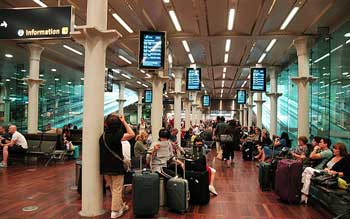
>>>Best one-week London and Paris itinerary in detail
>>>Check London hotel deals
>>>Check Paris hotel deals
Itinerary 2: England and Scotland
- London (3 or 4 nights)
- York (1 night)
- Edinburgh, Scotland (2 or 3 nights)
- Inverness, Scotland (2 or 3 nights)
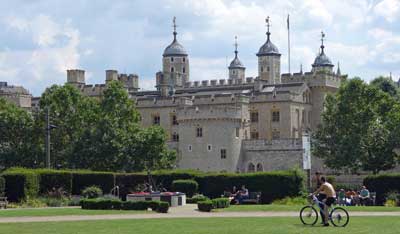
York is a small Roman city with intact city walls and one of the most famous cathedrals in Europe. Edinburgh is not only the capital of Scotland, but it’s easily the second most interesting city in all of Britain. If your time is short, skip York and spend more time in Edinburgh.
If you prefer to focus on the south of England on your first trip then the best option is to go to Bath or nearby Bristol after London. Bath is another of England’s top destinations and it’s a gorgeous city that has been a spa resort for many centuries. It’s also reasonably close to Stonehenge. You can also easily get to Cornwall in England’s southwest corner from Bath, and that’s a whole different and fascinating experience (with nicer weather than up north).
If you’ve got more than a week and want to spend more time in Scotland, especially in the summer months, the place to head to is Inverness. It’s a small town that is considered the gateway to the Scottish Highlands, but it’s an interesting and charming place on its own. You can take day-trips by bus to the highlights of the Highlands including the Isle of Skye and Loch Ness. Between you and me, it’s better to minimize time in Loch Ness or skip it altogether because it’s not one of the more photogenic parts of Scotland and the monster has always been a hoax.
Travel times between the recommended places
- London to York by train: 2 hours
- York to Edinburgh by train: 2.5 hours
- London to Edinburgh by train: 4 hours
- Edinburgh to Inverness by train: 3.5 hours
- London to Bath by train: 85 minutes
Best add-ons to England and Scotland
If you think you want to spend your whole trip in Britain you should have a look at our article on the best itineraries in England, Scotland, and Wales.
>>>Check London hotel deals
>>>Check Edinburgh hotel deals
Itinerary 3: Paris and Italy
- Paris (3 or 4 nights)
- Venice (1 night)
- Florence (2 or 3 nights)
- Rome (3 nights)
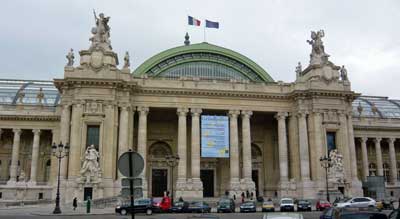
From Paris you can easily fly to Venice (or nearby Treviso) where you should try to spend about 24 hours. Venice is small enough to see in a full day, and so crowded that most people are satisfied to leave after that day. The key is to stay in the main part of the main island so you can enjoy Venice before the cruise passengers and day-trippers arrive, and also after they leave for the day. Two nights in Venice would not be wasted time, and it’s possibly the most gorgeous city in the entire world, but you can see the best of it in a bit over 24 hours.
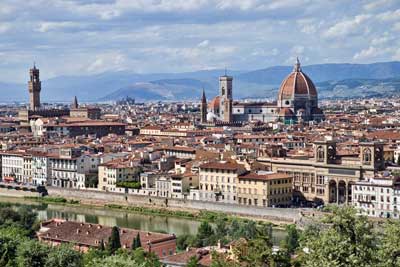
Rome also lives up to the hype and spending a day in the Vatican City will be a highlight even for non-Catholics, but it’s also a crowded and busy city so three days is usually enough for most people. Similar to Paris, Rome is an unusually beautiful city from almost any angle when you are in the historical center. You’ll walk through a stunning piazza (town square) and then turn a corner and you’ll see gorgeous buildings or public statues that are as nice as anything in the museums. Seriously, it’s worth a visit.
Paris to Venice flight: 1 hour 35 minutes
Venice to Florence by train: 1 hour 53 minutes
Florence to Rome by train: 1 hour 16 minutes
You can of course instead fly from Paris to Rome and then go north to Florence and then to Venice and fly home (or back to Paris) from there, and it would be just as enjoyable.
Best add-ons to Paris and Italy
France
- Nice/Cannes/Monaco (2 or 3 nights)
- Avignon (2 nights)
- Bourges (2 nights)
- Bordeaux (2 nights)
- Aix-en-Provence (2 nights)
- Reims (2 nights)
- Dijon/Burgundy (2 nights)
Italy
- Milan (1 or 2 nights)
- Lake Como (2 nights)
- Siena (2 nights)
- Cinque Terre (1 night)
- Naples/Sorrento/Amalfi Coast/Pompeii/Capri (3 to 5 nights)
- Sicily (3 to 4 nights)
>>>Much more information in this article about the best France and Italy itineraries
>>>Check Paris hotel deals
>>>Check Venice hotel deals
>>>Check Florence hotel deals
>>>Check Rome hotel deals
Itinerary 4: Mediterranean cruise
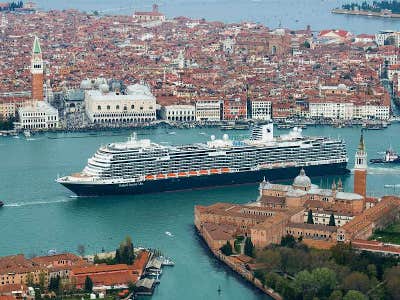
In spite of the reputation of cruises to be floating buffets, they can actually be an excellent way to visit a great number of amazing European cities in a short time. The ship typically is in port from the early morning until mid evening, often giving you the opportunity to have dinner in the city (unlike Caribbean cruises). Better still, the cruise ports are often near the center of town, so you can just walk off the ship and do sightseeing on foot or by public transportation.
Mediterranean cruises usually start at 7 nights but can go up to 3 weeks, which can provide an amazing tour of the entire region without having to pack and repack your bags more than once. They also can provide excellent value, especially compared to the price of taking trains or flights and finding new hotels in every destination.
Most popular Mediterranean departure ports
Barcelona, Spain – It’s an easy port to reach. Ships generally go from Barcelona with stops in France and then Italy.
Rome (Civitavecchia), Italy – The port isn’t very close to Rome, but it’s easy to get back and forth. Ships go west to France and Spain as well as south around the tip of Italy and then on to Croatia, Venice, and to Greece.
Venice, Italy – The cruise ships no longer dock close to the best tourist areas, but it’s easy enough to visit Venice for a day or two before boarding a ship. Ships starting in Venice go south and then head west and to Rome and then to France, or they go south to Croatia and then head east to Greece.
Athens, Greece – The cruise port of Piraeus is just south of Athens and easy to reach. Ships from Athens usually head west towards Croatia, Italy, France, and Spain, but there are also ships that visit Greek islands and Turkey.
>>>Check for deals on Mediterranean cruises
Alternative to consider: a river cruise
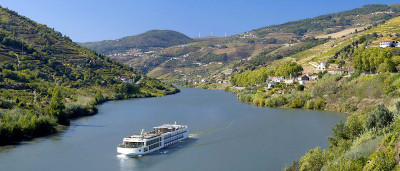
Amsterdam, Budapest, and Prague are some of the most popular river cruise ports, but there are dozens of others including many smaller towns in France where few other tourists will be when you stroll off the ship. There is little or no entertainment on the river cruise ships, but passengers don’t miss it because the entire day and into the evening is spent just steps from local cultural offerings and restaurants.
>>>Check for Europe and river cruise deals
Itinerary 5: France, Belgium, and Netherlands
Paris to Brussels: 1 hour 22 minutes
Brussels to Bruge: 58 minutes
Bruges to Amsterdam: 2 hours 45 minutes
Amsterdam to Paris: 3 hours 17 minutes
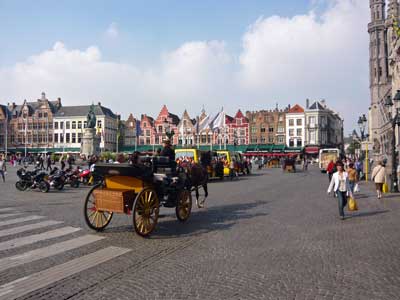
Spending 4 nights in Paris and 3 nights in Amsterdam would be a great trip, but if you want to see something else you’ve got a couple options in between. My advice is to spend an afternoon looking around the Grand Place (main square) in Brussels and then hop a 58-minute train ride to Bruges for a night or two. Brussels isn’t a great tourist city, but Bruges really is so it’s a better option for most people. Whatever you choose out of this group, you can be back in Paris on another high-speed train for your flight home.
Best add-ons to France, Belgium, and Netherlands
- Luxembourg City (1 or 2 nights)
- Cologne, Germany (1 or 2 nights)
- London (3 or 4 nights)
- Interlaken, Switzerland (2 or 3 nights)
>>>Check Paris hotel deals
>>>Check Bruges hotel deals
>>>Check Amsterdam hotel deals
Itinerary 6: Paris and elsewhere in France
- Paris (3 or 4 nights)
And a choice of:
- Nice/Cannes/Monaco (2 or 3 nights)
- Avignon (2 nights)
- Bourges (2 nights)
- Bordeaux (2 nights)
- Aix-en-Provence (2 nights)
- Reims (2 nights)
- Dijon/Burgundy (2 nights)
- Normandy (2 nights)
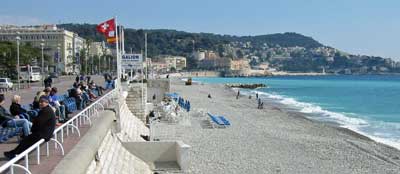
While Nice is a wonderful tourist city for a look at the French Riviera, the other larger cities of Lyon and Marseilles are probably better saved for a future trip because they are light on key sights compared to many smaller towns. Wine lovers can rent a car or take trains into Bordeaux or Burgundy. Since you can get between most of these towns by train in 2 hours or less, spending only 2 nights in each one is a reasonable option if you want to see a lot in a short time.
Normandy is an interesting choice and easy to reach in only about two hours by train from Paris. Some visitors like to see the famous WWII beaches and memorials, while others (especially in summer) like to check out one or more of the beach-resort towns. Deauville is one of the more famous of those, and it’s also famous for its horse race track and as one of the epicenters of the industry in Europe.
Best add-ons to Paris and elsewhere
- More France, of course
- London (3 or 4 nights)
- Interlaken, Switzerland (2 or 3 nights)
- Amsterdam (2 or 3 nights)
>>>Check Paris hotel deals
>>>Check Nice hotel deals
Itinerary 7: Italy
Rome to Florence: 1 hour 16 minutes
Florence to Venice: 1 hour 53 minutes
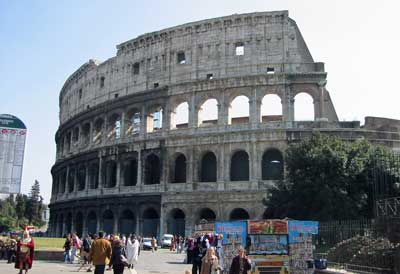
Venice is small enough that you can see the main sights in about 24 hours, and it’s so insanely crowded that many people tire of it after about a day as well. It’s better to pay more for a hotel to be on the main island and visit quickly than to save money with a hotel on the mainland where you’ll be in crowds going back and forth as well. Florence is the most relaxing of the 3, and also a great base for side trips to Pisa, Siena, and Cinque Terre, just to name a few.
Going to Italy? Here are the best first-time Italy itineraries for 3 days to 2 weeks (in much greater detail)
Best add-ons to Italy
- Milan (1 or 2 nights)
- Lake Como (2 nights)
- Siena (2 nights)
- Cinque Terre (1 night)
- Naples/Sorrento/Amalfi Coast/Pompeii/Capri (3 to 5 nights)
- Sicily (3 to 4 nights)
>>>Check Rome hotel deals
>>>Check Florence hotel deals
>>>Check Venice hotel deals
Itinerary 8: Spain
Madrid to Barcelona: 2 hours 30 minutes
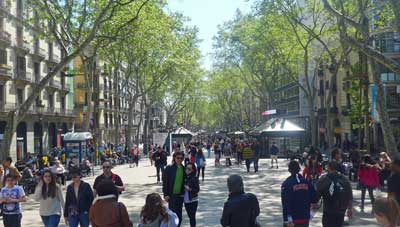
A huge part of Spain’s tourism industry is built around its southern beaches and islands such as Ibiza, Mallorca, and Tenerife (in the Canary Islands). For most people it’s best to ignore those places on your first trip because none of the beaches are special enough to spend days on them compared to the culture of the cities.
Best add-ons to Spain
By popular demand, I’ve added a full article on where to go in Spain with itineraries from 7 to 10 days up to two weeks.
>>>Check Madrid hotel deals
>>>Check Barcelona hotel deals
>>>Check Lisbon hotel deals
Itinerary 9: Germany
Berlin to Munich: 6 hours 2 minutes
Munich to Rothenburg ob der Tauber: 2 hours 56 minutes
Munich to Füssen: 2 hours 4 minutes
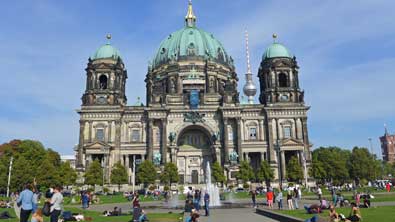
Those two cities are the keys to a Germany visit, and after that you’ve got a wide variety of choices. I cover most of the popular choices in my article on where to go in Germany, which covers several smaller towns that are major highlights.
Best add-ons to Germany
- Cologne (1 or 2 nights)
- Hamburg (2 or 3 nights)
- Amsterdam (3 nights)
- Prague (3 nights)
- Salzburg (2 or 3 nights)
- Vienna (3 nights)
- Interlaken, Switzerland (3 nights)
- Lucerne, Switzerland (2 or 3 nights)
>>>Check Berlin hotel deals
>>>Check Munich hotel deals
Itinerary 10: Switzerland
- Interlaken (3 nights)
- Bern (1 night)
- Lucerne (3 nights)
Zurich Airport to Interlaken: 2 hours 10 minutes
Interlaken to Bern: 53 minutes
Bern to Lucerne: 1 hour 50 minutes
Lucerne to Zurich Airport: 1 hour 3 minutes
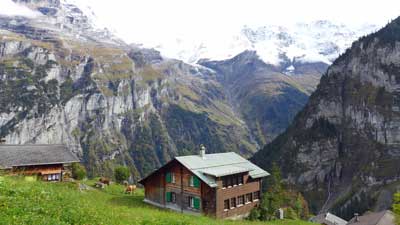
Interlaken is the best hub for the most dramatic Alps views and experiences. The one-hour cable car ride up to the Schilthorn observation deck is something you’ll never forget, and the only thing that might be more dramatic is the train ride up to the Jungfraujoch station, which is the highest in Europe. Lucerne is almost as beautiful with a scenic lake at its heart and also great mountaintop views nearby. If you do want to see a Swiss city then the capital of Bern is the most interesting and photogenic on a short visit. Read more about where to go in Switzerland for even more ideas.
Best add-ons to Switzerland
>>>Check Interlaken hotel deals
>>>Check Lucerne hotel deals
Itinerary 11: Eastern Europe’s best cheap cities
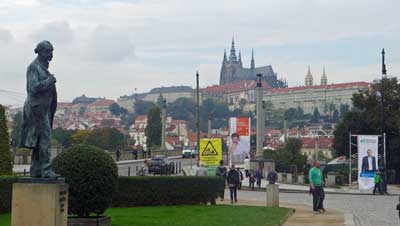
Each of these cities is beautiful and historic, but English is less widely spoken so they can also be quite a bit more challenging for a first-time visitor. Another difficulty is that the trains between them are still quite slow compared to the high-speed rail in the West, so it takes most of a day from one to another, and a bus is often a better choice. I cover this best cheap Europe itinerary more fully in the linked article.
Prague to Budapest: 6 hours 41 minutes
Budapest to Krakow: 9 hours 54 minutes (flying might be better)
Best add-ons to cheap Eastern Europe
- Cesky Krumlov, Czechia (2 nights)
- Ljubljana, Slovenia (2 or 3 nights)
- Split, Croatia (3 nights)
- Belgrade, Serbia (2 or 3 nights)
- Sarajevo, Bosnia and Herzegovina (2 or 3 nights)
- Sofia, Bulgaria (2 or 3 nights)
>>>Check Prague hotel deals
>>>Check Budapest hotel deals
>>>Check Krakow hotel deals


I would like to travel from Singapore to Europe from 10th Dec to 31 Dec 17, about 22 days, to Italy, Switzerland, another other Europe countries. As this is my first time to travel to Europe, would appreciate if you could recommend. Thanks a lot!
Chris,
I’m a big fan of Singapore, but let’s talk about Europe. Your plan sounds like a good one. I’d say your best other country to add to this would be France, and specifically Paris. December isn’t an easy or ideal time to visit the countryside or wine regions or that sort of thing, but it will be wonderful in Paris. I’ll give you two main options.
It would be best if you could fly into one city and out of another. If that is possible you could fly from Singapore to London and spend 3 or 4 days there. Then take the Eurostar train to Paris and spend 3 or 4 days there. Then take the train from Paris to Interlaken and then another train to Lucerne. If you can spend 4 or 5 days in Switzerland it will be ideal. I discuss the best options in my article about where to go in Switzerland. Switzerland is very expensive, however, so the time you spend there the more expensive your whole trip will be.
From Lucerne you can take a train through the Alps to Venice, with a change in Milan. It takes 6 hours 10 minutes and the journey through the Alps is one of the most beautiful rides you’ll ever take. Spend 1 or 2 days in Venice and then take a train to Florence for 2 or 3 days, and then a train to Rome for 3 days. I have more specific suggestions in my article on where to go in France and Italy. Then fly home from Rome.
If you want to leave out London you could fly into Paris and spend a bit more time in some of the cities. It will be chilly no matter where you go in Europe that time of year, so there isn’t much point in going to a beach city such as Nice, because it’s very quiet in the cold months. Let me know if you have any other questions and I’ll be happy to help more. -Roger
Hi Roger, thanks for a most valuable site, it is truly appreciated!
I’m wanting to travel to Europe in March 2018 for about 12-13 days. This will be my first trip to Europe, and I’d love to see Paris and Amsterdam for at least 2-3 nights each. I’d also like to see another city in another country. Brussels doesn’t really appeal to me too much. Could you recommend another city to spend the remainder of the time in? I was thinking Munich in Germany, but perhaps this is too far away and should be kept for a future trip? I’d be interested to hear your thoughts. Thank you!
Craig,
I’m glad you like the website. Since this is your first trip to Europe I would highly recommend spending 3 nights in Paris, and 4 nights would even be better if you can do it. Amsterdam is much more compact, although there are many things to see, so 2 days could work but 3 is much better. A high-speed train connects those cities in a bit over 3 hours, and the fare is much cheaper if you buy well in advance.
In my opinion, Brussels is a bit of a dud for tourists, so I agree with you there. One very popular thing to do is to take a train from Paris to Brussels and then spend a few hours there seeing the wonderful Old Town area around the main square, which is called Grand Place. Then hop on a train to Bruges, which is an hour away, and spend 2 nights there. Bruges is a much nicer tourist city than Brussels, and it’s a bit cheaper as well. The downside to consider is that Bruges and Amsterdam look quite a bit alike because they were both rich trading cities in the 1500s and 1600s when most of them were built. I still recommend Bruges, but it’s just a bit less special if you are visiting Amsterdam on the same trip.
Another popular option is to stop in Cologne, which is right on the way between Paris and Amsterdam. The Gothic cathedral there is the main draw, and the historic town area around it is also pretty nice. You can see those in a day or so if that appeals to you.
From Amsterdam you can take a train to Berlin in around 6 hours. Berlin is easier to reach from Paris or Amsterdam than Munich is, and I think it’s a much more interesting city as well. Yet another option is to visit Switzerland, which is only about 5 hours from Paris by train. Here is a little guide I wrote about where to go in Switzerland on a short visit. I hope this gives you some ideas. I’m happy to answer other questions if you have them. -Roger
Hi Roger love this site, we are traveling from Australia to the med in August, we have not booked flights yet but have booked a 7 day cruise in a small luxury boat around croatia starting in split and finishing in dubrovnik . looking at the lakes and spending a few days each side of split and Dubrovnik, so that would take about 2 weeks. Our problem is we now only have 2 weeks left( 4 week vacation only).
We would love to see Switzerland ,Santorini, nice, amalfi or spain not sure which we could do so we don’t travel to much. we havent booked flights yet so could come into any country and leave from any where.
We love beautiful scenery eating and drinking and walking around quaint towns we do love swimming to.Not bothered about sandy beaches lots of them in Australia. We have been last year to Venice, Florence and Italy for a few days and loved it, also we went on a cruise from rome to Barcelona . So that is our situation could you suggest a Itinerary with all of this in mind. sorry it a bit long.
Louise,
This is an interesting situation. One of the major factors to consider is that nearly every town and beach on the Mediterranean is packed in August, and prices are at their peak as well. As you might know, most of the office workers in Europe take all of August off (some July instead), and those who can afford it all flock to the closest beaches. That includes Nice, Amalfi, and Santorini, although Santorini will still be cheaper in general. Since you understandably don’t care much about sandy beaches (and nearly all of Europe’s beaches are shite compared to those in Oz), you might instead focus on cities. On your cruise and in Croatia you’ll have plenty of sunbathing time and such if you want it.
Believe it or not, Paris is half empty in August due to this same phenomenon. Hotel prices are reasonable and the crowds are minimal, so you might think about that for 3 or 4 days. You could also spend 4 or 5 days in Switzerland, which is also highly recommended (if a bit pricey). Croatia will be quite warm in August, and Spain is usually worse, so you might appreciate cooling off a bit in Paris, Switzerland, and maybe Salzburg or Munich or Budapest or Prague? My recommendation is to stay 3 nights in just about any city that you visit, so if you have two weeks to work with that would be 4 or 5 cities at most. Switzerland is so expensive that many people spend 2 days in Interlaken and 2 days in Lucerne, and you can see a lot in that amount of time there.
I hope this helps at least a bit. I’m happy to help more with suggestions once you figure out more about the sort of places you want to visit. -Roger
Hi Roger
We are currently planning our Europe trip for a month Sept/Oct 2018. I was lucky to receive a bonus, so we are doing a 2 week river cruise Budapest – Amsterdam.
I have family in UK, but don’t want to go that far West this trip, so we expect that we want a week or so before Budapest and a few days after Amsterdam before we fly back to Australia.
I was excited by Croatia for GoT scenes, and beaches…but you said it has become more expensive than Greek Islands, so we are after some inspiration please?
Cheers
Dan
Dan,
That sounds like an amazing trip. If I were you I’d still focus on Croatia, especially if it’s less travel time. At the moment you can get some very good deals on the Greek Islands, but honestly there really isn’t that much to see on most of them. Nearly all of those who go to Greek Islands are Europeans looking for a place to sit in the sun during the day and enjoy food and drinks at night.
Croatia gets a lot of those kinds of visitors as well, although mostly in July and August. Really it’s just Dubrovnik and specifically inside the city walls that are worth avoiding based on price. It’s a really lovely and interesting city that is worth a visit, but a hotel within the city walls is now quite expensive, and every restaurant in the same area is not only expensive but primarily aimed at tourists rather than locals. I’m a big fan of the city of Split, which actually resembles Dubrovnik with its amazing all-white city center, but prices are half of Dubrovnik and it’s a living city rather than just a tourist destination. There are islands near Split that you can take ferries to as well, and beach areas up and down the coast. By the way, being from Australia it’s easy to assume that most coastlines have fluffy white sand there waiting for you, but in most of Europe the coasts are rocky or mountainous and many of the actual beaches are rocky rather than sandy. So if you want to spend time on a nice, sandy beach, you need to research to be sure.
Speaking of Croatia, I find Zagreb to be a bit dull compared to the coastal cities, but the Plitvice Falls National Park is one of Europe’s great outdoor sights. The weather should be very nice in Croatia that time of year as well. Let me know if you have any other questions. -Roger
Hi Roger,
We’ll be traveling to Salzburg from Cesky Krumlov on 22nd of December. Currently, there are no bus routes available due to change in time-table for winters. I would like to know if there are direct buses from CK to Salzburg in winters? If yes, when can we book them? Plus, is it possible to catch an early morning bus from CK around 8.30am to reach Salzburg around 11.00 am.
My complete itinerary is:
17-18-19-20 DEC–> Prague
21 DEC–> CK
22-23 DEC–> Salzburg
24-25 DEC–> Vienna
26-27-28-29 DEC–> Budapest
Suggestions and feedback will be a great help!
Pradeep,
Yes, it seems that Bean Shuttle closes down from November through March, which is a shame because that is who I used. But they say that their sister company goes all winter, and I see that they have 2 buses a day on 22-December. Check the booking page on CZShuttle.cz and you should be okay.
You can also go by train any day of the year. It takes a bit under 5 hours and the Cesky Krumlov train station is a bit out of town, but at least that is a good back-up option.
I think your itinerary looks good. Vienna should be a fun place to spend Christmas, although some of the sights are probably going to be closed on 25-December. If that is a problem you might stay an extra day and spend only 3 nights in Budapest. Let me know if you have any other questions. -Roger
Hai Roger,
Thanks for the reply.
We already book our tickets and its a dream come true for us.
I do have in mind that we want to visit as much as we can and for some places maybe its gonna be a day visit and continue journey to some other places.
Thank you so much for your help.
Btw,our trip gonna be start and end at paris..
For the time being we are planning of gamble to go anywhere that popped up in mind based on the time and route that easy.
Your articles and comments here is much appreciated and it helps a lot.especially when im the one need to plan everything.
Thanks again Roger.
Hi! What about an itinerary when I want to visit are spain, italy, france and netherlands in 7 days? thank you! Im planning to visit on march 2018
Shamelle,
My strong recommendation is to spend 3 nights in just about any city that you visit. It takes most of a day to check out of a hotel and then take a train or flight to another city and check into a hotel there. So if you spend only two night in a city it’s really only one sightseeing day and you spend half your holiday in transit.
In other words, if you have 7 days you should choose 2 or perhaps 3 cities (rather than countries) to visit. Once you do that the itinerary will be much easier to sort out. Let me know if you have any other questions. -Roger
Good Afternoon Roger,
My cousins and I will be traveling to Europe- I bought the plane ticket and we will be landing in Inverness, Scotland at 12:45pm on November 21st and flying back from Inverness to Armsterdam (where there is an 18 hour layover) before heading to LAX.
My question for you is- what do recommend that we visit and for how long in order to enjoy the trip (we do not mind a fast pace but will like to take in and enjoy each location. The only thing that is a must – Harry Potter London Tour. Looking forward to your response and insight.
All the Best,
Veronica
Veronica,
I’d be able to help more if I knew how long you were staying in total. Inverness is a small town and an unusual place to start a Europe trip, but it’s also a wonderful place and it’s the gateway to the Scottish Highlands. The most popular thing to do there is a bus tour into the Highlands and the Isle of Skye in particular. Loch Ness is also near Inverness and they have a variety of lake cruises that spend a lot of time discussing the Loch Ness Monster. Don’t waste your time on any of them, as Loch Ness isn’t particularly scenic and the Monster stuff is just silly.
From Inverness I’d take a train to Edinburgh and spend 2 or 3 days there, and then a train down to London. If you book those at least a month or two in advance those train rides will be fairly cheap, while if you book on travel day they will be extremely expensive. I don’t know how much more time you have. From London if you have time probably the best thing to do is take the Eurostar 2 hours to Paris. Let me know more about what you have in mind and I can try to help more. -Roger
we are planning on 2 weeks mid September. should we do a tour or try to plan it on our own? we want to hit the highlights but there are some places off the beaten path we would like to go too (Liverpool), Germany (we have family there). Just want the most economical and easiest way to go.
Kristen,
I’d recommend planning it yourself to save money AND for added flexibility. Europe is very easy to do for us English speakers, and group tours tend to go frustratingly slow.
One key to saving money is to buy your train tickets 2 to 3 months in advance if you can. Especially in Britain, train tickets are cheap if you buy early and insanely expensive if you buy on travel day. Liverpool is a really nice city so I think that’s a good choice. Let me know if you need any other advice as you are planning. -Roger
Hai Roger, regard from Malaysia.
Ive been to europe several times including London,paris,amsterdam,swirtzeland,Brussel,Belgium,itali(Rome,florence,venice,lake como,milan and several other places but using agent.
This time me and myhusband planning on doing it just two of us on january 2018 for two weeks time and can u suggest places that maybe we can go and it will be start and end from London. I want to include barcelona,paris,london im there too.
Thank ypu in advance.
Miza,
If you’ve got two weeks I’d recommend 4 or 5 total destinations for about 3 days each. If you are doing London and Paris for sure (fine choices of course) and you want to include Barcelona, then you don’t have too many more places to add. The most obvious one would be Madrid because it’s a wonderful city and it’s very different from Barcelona. So you could fly into London and then take the Eurostar to Paris, and then take a train to Barcelona (or fly if you prefer) and then the high speed train to Madrid.
If you want to add another city you could include Valencia, which is also different from the others, or even a day trip from Madrid or stay in Toledo. Then fly back to Madrid from London. This would work pretty well in January, which is otherwise a tricky month in Europe because most cities are cold and the northern cities have very short days. You can see my other recommendations in my recent article about the best Europe destinations in January. Let me know if you have any other questions. -Roger